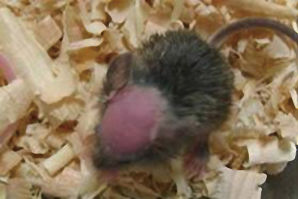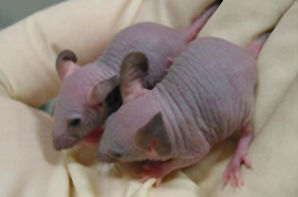Abnormal Cuticle caused by mutations in Gene leads to Hair Loss, Japanese scientists identified

Noticing a few extra hairs in your comb lately? Maybe your hair is growing just fine but falling out before its due time, and this can be caused by the lack of interlocking structures of protein anchoring your hair to your scalp.
A group of scientists from Keio University and National Institute of Genetics has uncovered a genetic mechanism which can be responsible for human hair loss (alopecia) in both gender. Their findings may lead to new treatments for hair loss.
Read on for details.
A study led by professor Yumiko Saga of National Institute of Genetics and professor Hideyuki Okano of Keio University have identified the genetic mechanism that cause cyclical hair loss in mice, suggesting the same mechanism could be the cause of human hair loss. Their finding is published as "The disruption of Sox21-mediated hair shaft cuticle differentiation causes cyclic alopecia in mice" in Proceedings of the National Academy of Sciences.
Hair is maintained through a cyclic process that includes periodic regeneration of hair follicles in a stem cell-dependent manner. Little is known, however, about the cellular and molecular mechanisms that regulate the layered differentiation of the hair follicle. We have established a mutant mouse with a cyclic alopecia phenotype resulting from the targeted disruption of Sox21, a gene that encodes a HMG-box protein. These mice exhibit progressive hair loss after morphogenesis of the first hair follicle and become completely nude in appearance, but then show hair regrowth. Sox21 is expressed in the cuticle layer and the progenitor cells of the hair shaft in both mouse and human. The lack of this gene results in a loss of the interlocking structures required for anchoring the hair shaft in the hair follicle. Furthermore, the expression of genes encoding the keratins and keratin binding proteins in the hair shaft cuticle are also specifically down-regulated in the Sox21-null mouse. These results indicate that Sox21 is a master regulator of hair shaft cuticle differentiation and shed light on the possible causes of human hair disorders.
Mice born lacking Sox21 gene could grow hair as any other mouse but their hair started to fall out when they were around 15-days-old.
The mouse's hair started to thin from the head.

They gradually lose hair to become completely fur-less. The mice grew hair again but the hair loss repeated in about 25 days.

Hair loss can be induced by age, stress, inheritance, testosteron level and other various factors, but this finding might lead to a cure for at least some cases.
Related Posts:
in Note, Posted by logc_nt







